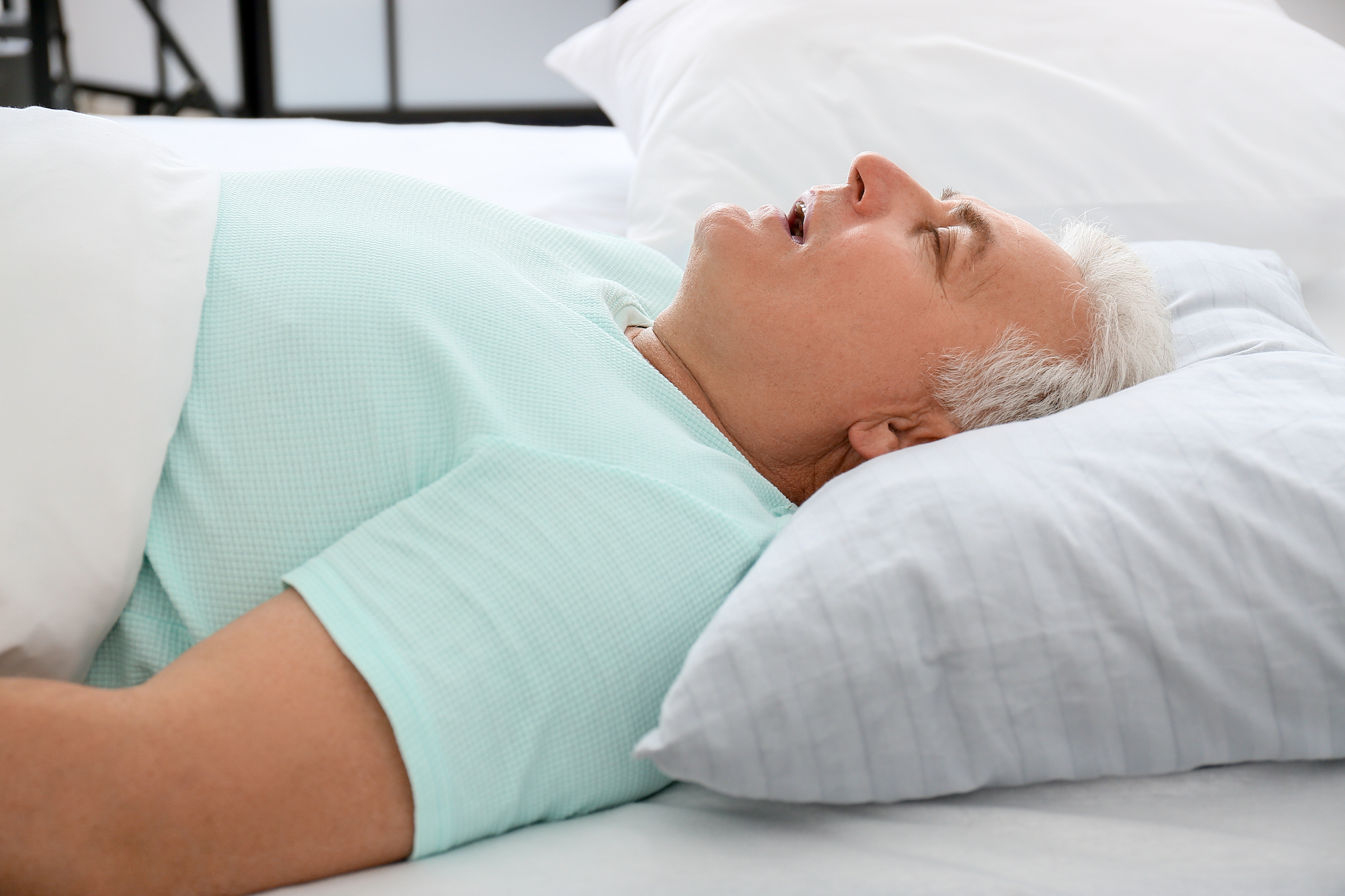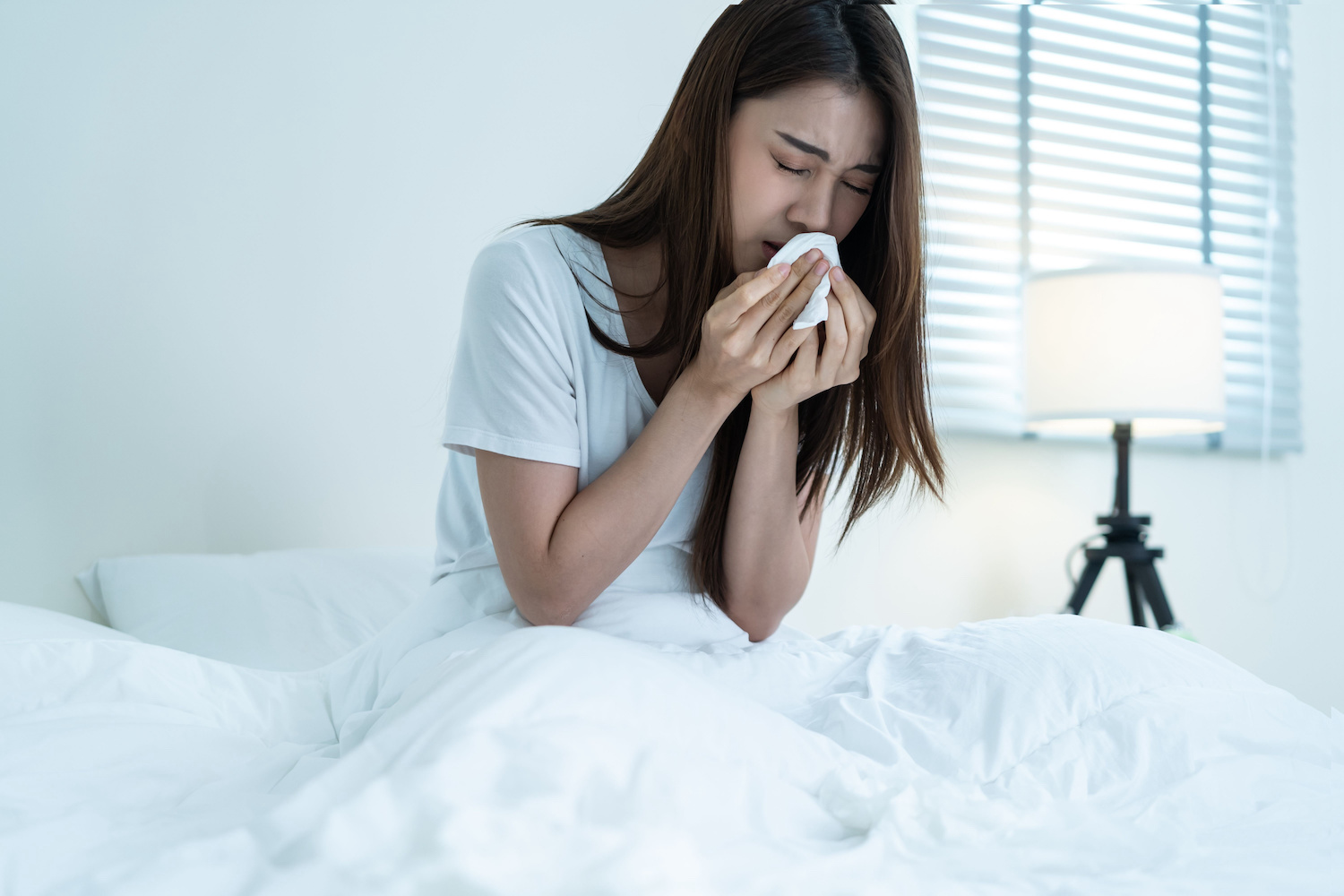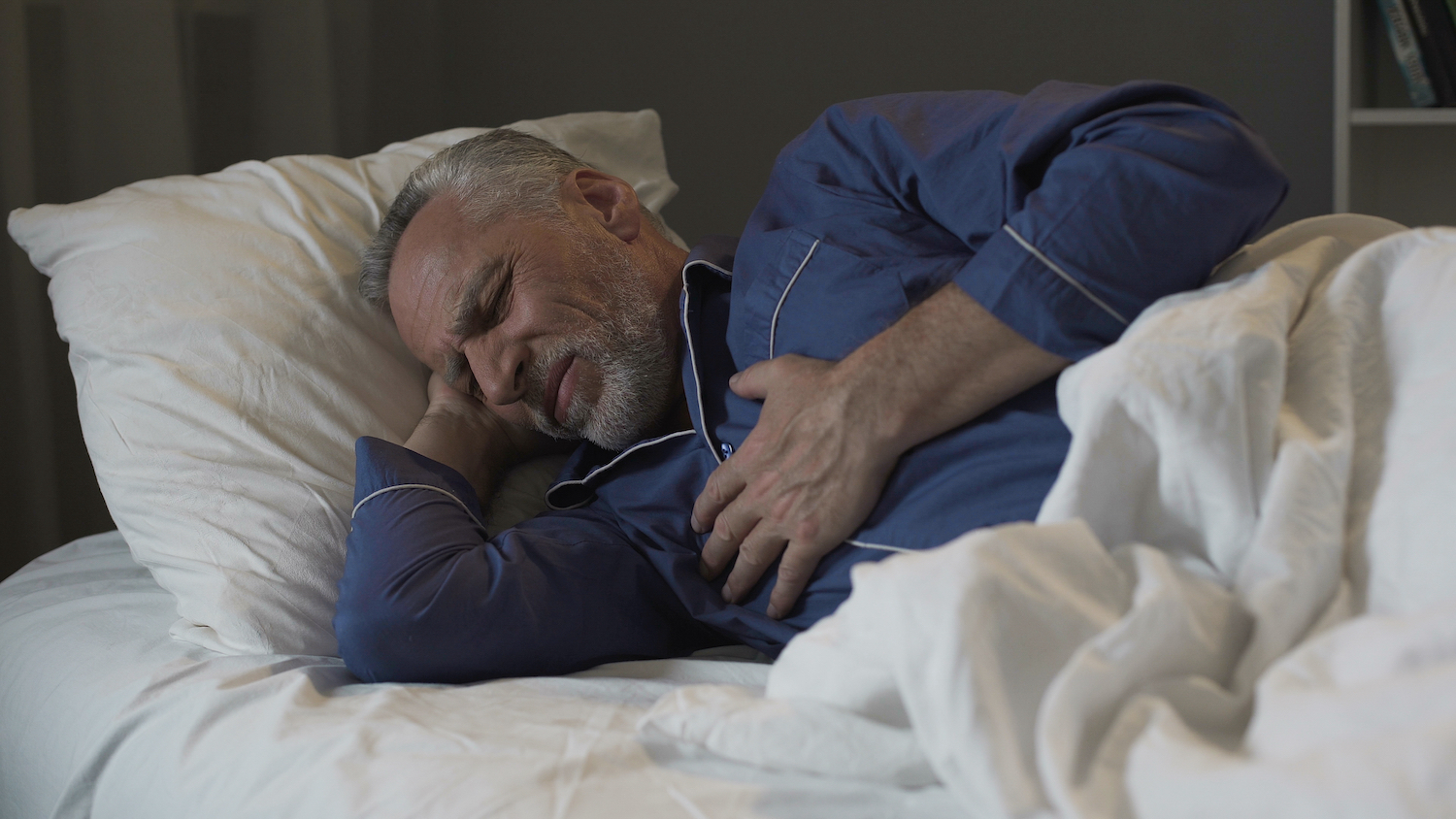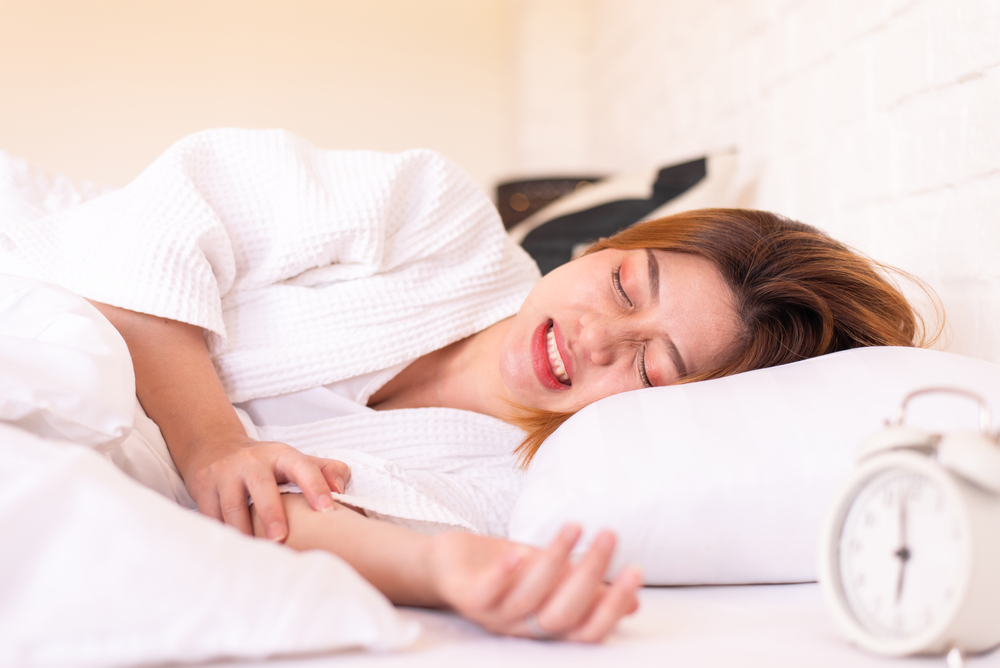Obstructive sleep apnea (OSA) is a common sleep disorder in which repeated breathing disruptions reduce the quality of a person’s sleep and contribute to potentially serious health complications. Diagnosing and treating OSA early can improve breathing during sleep, reduce symptoms and long-term health risks, and enhance overall quality of life.
How Is Obstructive Sleep Apnea Diagnosed?
Obstructive sleep apnea is diagnosed based on the results of an overnight test that evaluates breathing during sleep. To determine whether a sleep apnea test is needed, a doctor considers a person’s symptoms, risk factors, and the results of a physical exam.
Understanding a person’s symptoms helps doctors estimate the likelihood and potential severity of nighttime breathing disruptions. Symptoms of OSA include:
- Pauses in breathing seen by a bed partner or family member
- Making gasping or choking sounds while sleeping
- Persistent and loud snoring
- Restless or unrefreshing sleep
- Excessive sleepiness during the daytime
- Morning headaches
By asking questions about a person’s medical history and conducting a physical exam, a doctor also takes into account whether a person has certain risk factors or health conditions associated with OSA. These include:
- Male sex
- Older age
- Obesity
- Large neck size
- Large tongue or crowded upper airway
- High blood pressure
- Abnormal heart rhythms
- Nighttime chest pain
- Heart failure or stroke
In some cases, doctors may use other tools to determine whether a person needs further testing for obstructive sleep apnea. Tools that can evaluate the risk of OSA and may help determine the need for additional testing include the STOP-Bang questionnaire, the Epworth Sleepiness Scale, and the Berlin score.
If, after a thorough assessment, a doctor suspects that a person may have obstructive sleep apnea, they will recommend sleep apnea testing that can diagnose OSA, determine its severity, and help identify the optimal treatment.
What Is a Sleep Apnea Test?
A sleep apnea test is an overnight test that is necessary to confirm a diagnosis of obstructive sleep apnea.
One common type of sleep apnea test is a sleep study performed in a sleep lab. During an in-lab sleep study, technical equipment monitors breathing and various other processes happening in the body over the course of a single night of sleep.
While an in-lab study is the most accurate way of diagnosing sleep apnea, at-home sleep apnea testing is also available in certain circumstances.
In-Lab Sleep Apnea Test
During a sleep apnea test conducted in a sleep laboratory, a trained provider uses a variety of tools to evaluate a person’s sleep health. Data collected during a sleep study may include:
- Changes in airflow through the lungs
- The level of oxygen in the blood
- The pattern and rate of heart beats
- The length of sleep stages
- Sleeping position and movement during sleep
Once a sleep apnea test is complete, the doctor will evaluate the results to determine whether a person has obstructive sleep apnea. To diagnose obstructive sleep apnea, the doctor will consider a person’s symptoms and how often their breathing is paused or restricted during sleep, called their apnea-hypopnea index.
Based on these findings, the doctor can also classify the severity of obstructive sleep apnea.
- Mild: Mild obstructive sleep apnea may be diagnosed when a person has an average of between 5 and 14 breathing disruptions per hour during sleep.
- Moderate: Moderate obstructive sleep apnea is defined as having an average of 15 to 30 breathing disruptions per hour.
- Severe: Severe obstructive sleep apnea is diagnosed when, on average, a person has more than 30 breathing disruptions per hour of sleep. Those with severe OSA are more likely to have trouble staying awake through the day and are prone to dozing off at inappropriate or potentially dangerous times.
At-Home Sleep Apnea Test
Home sleep apnea testing involves an overnight test for sleep apnea that is conducted in a person’s home. This test requires using a special device through the night. A pre-programmed device may be provided to a person or it may be set up in the home by a trained provider.
While home sleep apnea testing is usually more convenient, it does not collect as much data as an in-lab sleep apnea test. For this reason, home testing is only used when:
- A doctor suspects that a person has OSA and not another sleep disorder
- A person has not been diagnosed with any other sleep disorders
- It’s unlikely that other health problems are interfering with breathing
- The sleeper is not a mission-critical worker, such as a police officer, pilot, or commercial driver
After a home sleep apnea test is complete, the results will be reviewed during a follow-up visit with the doctor. Based on the number of breathing disruptions detected, an at-home test can be used to diagnose OSA. If the results are unclear or incongruous with a person’s symptoms, the doctor may recommend confirming the results with an in-lab sleep study.
What Are the Next Steps After Getting a Diagnosis?
Once a diagnosis of obstructive sleep apnea is confirmed, a health care provider can recommend appropriate treatment. The focus of treatment is to reduce symptoms and long-term health risks by preventing the airway from becoming blocked while a person sleeps.
In addition to treatments to improve breathing during sleep, doctors often recommend addressing any underlying health issues that may be caused by or contribute to breathing disruptions. They may also recommend making lifestyle changes that can decrease the symptoms or severity of OSA. Lifestyle changes may include:
- Practicing good sleep habits
- Exercising regularly
- Maintaining a healthy weight
- Moderating alcohol consumption
- Quitting smoking and vaping of tobacco and cannabis
- Reducing the use of sedative drugs
- Avoiding back sleeping
Because obstructive sleep apnea can increase daytime sleepiness and the risk of health complications, doctors will educate people who are newly diagnosed about certain precautions to take in daily life, including:
- Avoiding things that worsen nighttime symptoms, such as evening alcohol consumption
- Not driving or doing potentially dangerous activities when tired
- Telling doctors and other health care providers about a sleep apnea diagnosis
Treatments for Obstructive Sleep Apnea
There are a variety of treatments for obstructive sleep apnea. Doctors determine the appropriate treatment based on the severity of the condition and a person’s overall health. Because many approaches require nightly treatment, doctors also work with individuals to determine what treatment is best suited to their needs and preferences.
Positive airway pressure (PAP) therapy is the most common treatment that is recommended for most people with OSA. PAP therapy, such as with a CPAP device, involves a bedside machine that delivers pressurized air through a tube and mask and into the upper airway. This helps to keep the airway from narrowing and causing breathing disruptions.
Other treatments for sleep apnea may be considered if PAP therapy does not provide a benefit or causes side effects or other difficulties.
- Surgery: Surgery for OSA attempts to modify physical structures in the mouth, nose, or throat to prevent breathing disruptions. It is generally limited to people who have tissue in or around their airway that contributes to obstructive sleep apnea.
- Oral appliances: Oral appliances are medical devices that shift the position of the tongue or jaw to prevent the airway from narrowing during sleep. These devices are prescribed and fitted by a dentist or other dental professional.
- Nerve stimulation: Hypoglossal nerve stimulation is a treatment for obstructive sleep apnea in which a small medical device is placed under the skin. This device uses electrical stimulation of specific nerves to shift the tongue forward during sleep so that it does not obstruct the airway.






